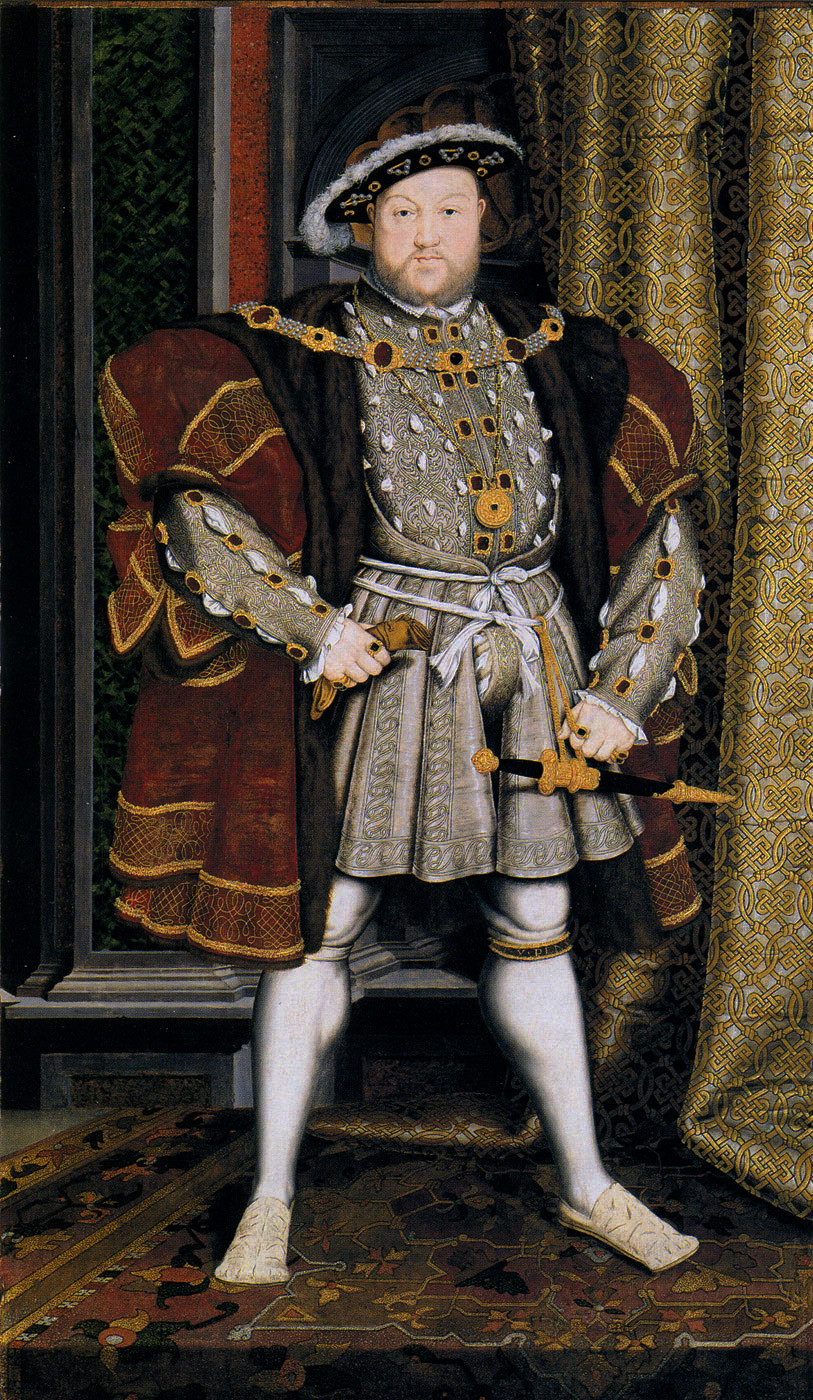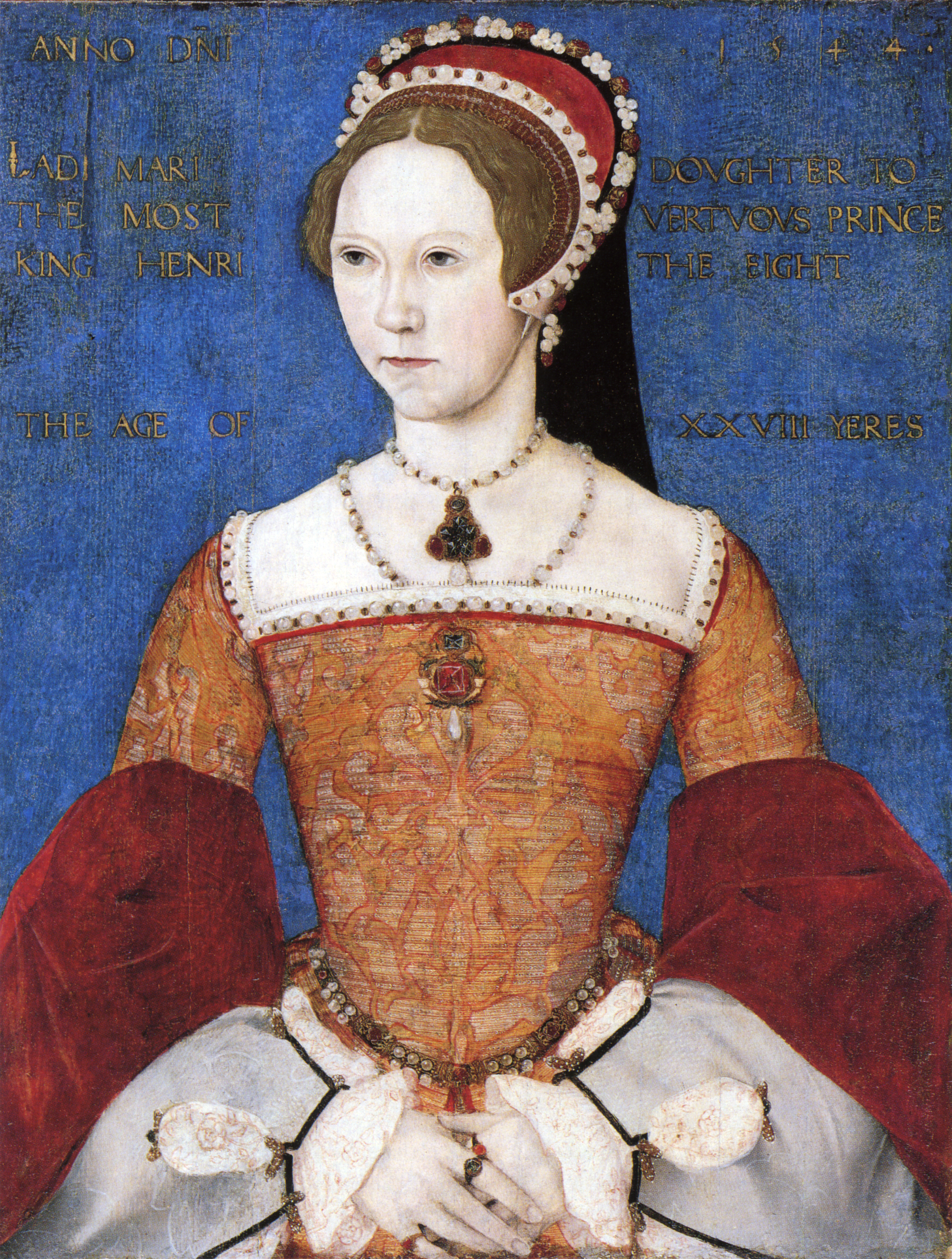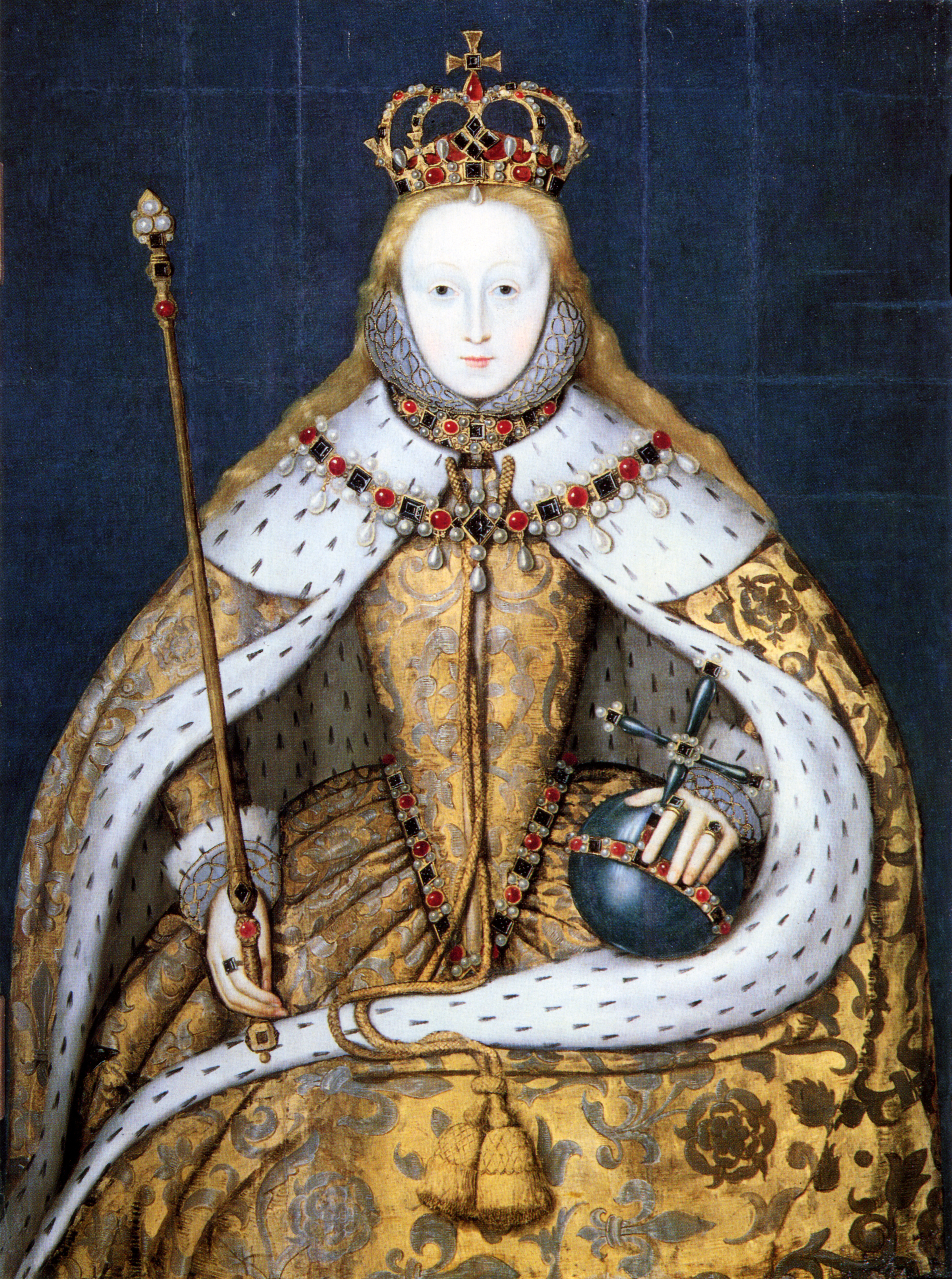Elizabethan England
The Renaissance
After Hans Holbein the Younger, Public domain, via Wikimedia Commons
Henry Tudor had ended the Wars of the Roses in 1485 by defeating King Richard III and marrying Elizabeth, uniting the Houses of York and Lancaster. His oldest son, Arthur, predeceased him; as a result, upon his death in 1509, his younger son became King Henry VIII.
Henry VIII married his dead brother's fiancée, a Spanish princess named Catherine of Aragon. They had one daughter, Mary. After several miscarriages and a stillborn son, Henry sought to annul his marriage to Catherine; the pope refused (as discussed before), and Henry initated the English Reformation, destroying monasteries, executing priests, and creating his own Christian denomination called Anglicanism.
After dismissing Catherine, Henry married his lover, Anne Boleyn. They had one daughter, Elizabeth, but no sons; Henry had her beheaded. He then married Jane Seymour, who died giving birth to a son, Edward. After Jane's death, Henry married Anne of Cleves, but later dismissed her as well and had the marriage annulled (which as head of the Anglican Church, he could do.) He then married Catherine Howard, but had her beheaded and before finally marrying Catherine Parr, who outlived him.

Master John, Public domain, via Wikimedia Commons
Henry was succeeded by his son, who became King Edward VI. Edward continued Henry's Protestant reforms, issuing the Book of Common Prayer to standardize liturgical practice across England. However, Edward died in 1553 at the age of 15. Before he died, he had attempted to name Lady Jane Grey, the grandniece of Henry VIII, as his successor, to avoid having a Catholic follow him on the throne. However, after just nine days in power, Jane Grey was deposed and beheaded. Henry's eldest daughter became Queen Mary, England's first queen regnant. Mary attempted to return the country to Catholicism. Hundreds of Protestants were burned at the stake for heresy, earning the new queen the nickname "Bloody Mary."

After Levina Teerlinc, Public domain, via Wikimedia Commons
Queen Mary died just five years later in 1558 and was succeeeded by her half-sister, Elizabeth, Henry's daughter by his second wife, Anne Boleyn. Queen Elizabeth returned the country to Protestantism. Hundreds of Catholics were hanged, drawn, and quartered for treason. She reigned for the next 44 years until her death in 1603. England's power continued to grow under her reign, including a shocking defeat of the Spanish navy in 1588. Being so long and stable, the "Elizabethan Era" saw the full flowering of a distinctively English culture. Writers like Christopher Marlowe and William Shakespeare, Tudor architecture, and composers like John Dowland, Thomas Tallis, and William Byrd all flourished during this time period.
Popular musical styles in England at the time may have been as bipolar as the politics. Upbeat madrigals, such as those found in Thomas Greaves' 1604 publication Songes of sundrie kindes, give an air of lightheartedness and joy, while melancholy songs for lute and piano, such as the works of John Dowland, convey a sense of despair and hopelessness.
